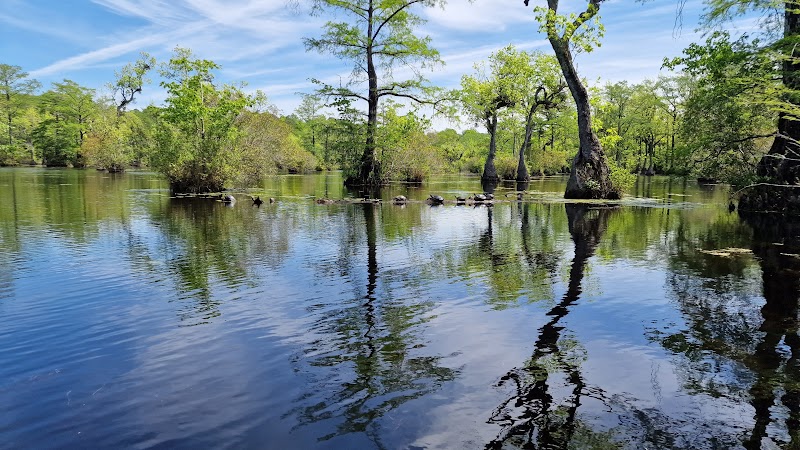
Exploring History on Foot: Prince George’s Historic Walking Tours
Prince George’s historic walking tours offer an accessible introduction to colonial and Civil War history amid gently rolling terrain and forested paths. Combining practical trail details with rich cultural context, these routes are ideal for history buffs and outdoor enthusiasts ready to explore Virginia’s past on foot.
Stay Hydrated
Bring at least one liter of water per person; there are no refill stations on the routes.
Wear Supportive Footwear
Choose trail shoes or sturdy walking shoes with traction suitable for gravel and dirt paths.
Timing Your Walk
Start early morning or late afternoon to avoid peak heat, particularly in summer months.
Prepare for Weather Shifts
Carry a lightweight rain jacket during spring and fall as conditions can change quickly in forested areas.
Exploring History on Foot: Prince George’s Historic Walking Tours
Prince George, Virginia, offers a compact yet captivating series of historic walking tours that bring the past to life amid easy-to-navigate paths. These walks cover 2 to 5 miles, weaving through flat to gently rolling terrain dominated by forested trails and well-preserved historic sites. The routes invite hikers to step carefully beside centuries-old architecture, battlefields, and timeless rural landscapes that command respect rather than demand conquest.
Each path includes surfaced trails mixed with some soft dirt and gravel, suitable for sturdy footwear—not hiking boots but definitely shoes with good tread. The elevation gain is modest, generally under 300 feet, making these tours accessible to a wide range of walkers without sacrificing interest or immersion. As you traverse these routes, ancient oaks and towering pines stand as quiet sentinels, their branches whispering stories of colonial life and Civil War skirmishes.
For those coming prepared, the tours offer pauses at historic churches, plantation homesteads, and small museums, providing context that enriches the physical journey. The roads edge small streams that murmur insistently as if eager to recount their own historic roles in local industry and settlement.
Practical considerations matter: bring water—no reliable refills are on trail—and set out in early morning or late afternoon to avoid midday heat especially in summer. Wear sun protection and reliable shoes, and don’t overlook a lightweight rain jacket if visiting spring or fall; weather in Prince George can shift in moments, especially with the forests surrounding the trails acting like living weather machines.
These routes are best tackled between March and November, with fall offering vivid leaf color that contrasts sharply with the stoic old brick and wood of the historical structures. Winter visits can be rewarding but prepare for slippery surfaces and colder winds.
Prince George’s historic walking tours are an invitation to engage with history actively. The land and landmarks are fiercely themselves—preserved yet alive—as much an adventure of discovery as a lesson in endurance and respect. This is history fit for walking; a straightforward, immersive experience that honors the rugged continuity of this Virginian landscape.
Nearby Trips
All Adventures
Boat Charters
Water Activities
Adventures near Prince George, Virginia
Discover the unique and memorable adventures that make Prince George, Virginia special.
Frequently Asked Questions
Are the walking tours accessible for families with young children?
Yes, the tours are generally easy with flat terrain and short distances, making them suitable for families. However, some historic sites may have steps or uneven surfaces, so adult supervision is advised.
Is there any guided tour option available?
Local historical societies occasionally offer guided tours that provide deeper insights into the sites. It’s best to check the Prince George County Visitor Center for scheduled events.
What wildlife might I encounter on these walks?
Walkers may see white-tailed deer, various songbirds, and occasionally box turtles. Early morning or dusk are prime times to observe wildlife activity.
Are pets allowed on the walking tours?
Pets are generally permitted on leash, but be mindful of historic sites with preserved interiors and always clean up after your animals.
Can I access these tours year-round?
Yes, but winter conditions can make some paths slippery or muddy. Spring and fall are ideal for balanced weather and trail conditions.
Is photography allowed at all historic sites along the trails?
Photography is generally encouraged outdoors, but some buildings or museums may restrict indoor photography. Check signs or ask staff before shooting inside.
Recommended Gear
Water Bottle
Hydration is critical with no access to refills on trails.
Comfortable Walking Shoes
Supportive shoes with traction handle gravel and forest floor irregularities.
Lightweight Rain Jacket
Spring showers require waterproof protection without overheating.
Hat and Sunscreen
Sun protection is vital during hottest months.
Local Insights
Hidden Gems
- "The small family cemetery just off the Battery Trail offers a quiet point to reflect on local history."
- "A less-traveled riverbank trail reveals old mill foundations barely visible to passersby."
Wildlife
- "Listen for the ambient calls of barred owls in the evening."
- "Keep an eye out for eastern box turtles crossing the path in warmer months."
History
"Prince George County holds some of Virginia’s earliest colonial sites, including remnants of plantations that played pivotal roles during the American Revolution and Civil War, offering walkers a tangible connection to the nation’s formative conflicts."
